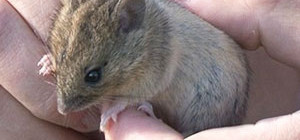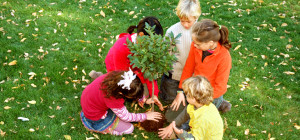Britain is known for its diverse range of wildlife, from twittering birds to bumbling bees. Whether you live in the countryside or a big city, the chances are you encounter many different species every day without even realising it, as there are so many minibeasts, birds and small mammals that can be found in our own back garden, with a huge 16 million gardens in the UK, many green-fingered Brits are keen to encourage animal populations to thrive in their own piece of green space. The ways in which you can encourage wildlife depends on which creatures you want to see, and what benefits you want them to bring to your garden; from pollinating insects to pest controlling prickly pals. Encourage furry, feathered and winged friends without being overrun with minibeasts by using this handy guide.
Flowers & Plants for Bees & Butterflies
When conjuring up an image of a British garden, we often envisage beautiful butterflies and buzzing bees diving amongst the flowers. But what flowers work best when encouraging these fluttering friends into our gardens? Well, put simply – the ones most rich in nectar and pollen.
Top 5 Plants for Pollinators
- Buddleia: This popular garden shrub has purple, fragrant flowers which butterflies love!
- Lavender: A favourite among many gardeners, butterflies and bees alike.
- Dahlias: Single or semi-double flowered Dahlias are great for pollinators and easy to grow.
- Foxgloves: An Iconic British flower which looks great and is able to grow in shady spots.
- Marigolds: Ideal bedding plants which can grow in any soil and attract a variety of insects.
What’s the Benefit? – As many of us know, bees pollinate flowers and are our best buddies when it comes to helping our garden grow. Butterflies do their fair share of pollinating too, as well as being an indicator that you have a wide range of insects in your garden – which also encourage the birds.
Baths & Boxes for the Birds
Britain Is famous for its wide selection of beautiful garden birds, from blue tits to blackbirds. The best way to encourage a wide variety of birds is by offering a selection of nutritional bird foods such as seeds, nuts, and fruits; many of which you can get from pet food stores. Bird baths can also make an attractive addition to your garden, however, can be pricey, especially the taller varieties which birds use often for bathing and drinking. By using discount promo codes for retailers such as Argos, Waitrose Garden, and B&Q can help reduce the cost of durable bird baths with money off codes as well as regular free delivery offers.
What’s the Benefit?: Birds are a great form of natural pest control, keeping the number of slugs, worms and beetles to a manageable level. They also help pollinate flowers and control weeds!
Top Tip: Always keep your bird feeders and bird baths clean. Birds can catch and spread diseases to one another, so keep the risks down by cleaning them out regularly and getting rid of leftovers.
Wild Areas for Wandering Hedgehogs
Like many animals, hedgehogs seek out the messier, wilder parts of gardens in order to find nesting materials, shelter, protection and somewhere to hibernate. Leaving twigs, leaves and foliage to grow in a section of your garden can help your hog feel at home. Make sure to put out some food and water, however, and even a hedgehog house, as these are essential to their survival; especially in winter.
What’s the Benefit?: Much like birds, hedgehogs also eat insects such as slugs, caterpillars, and beetles. They are an excellent alternative to pesticides, and as we all know, are super cute too!
Hedges & Brambles for a Dormouse House
This charming little garden dweller enjoys making its nest in hedges and brambles, preferably with some juicy fruits to munch on. They like to nestle deep within the hedge, so ensure you keep your hedges thick by trimming them regularly but leaving some areas to overgrow slightly to ensure a good production of fruits and berries.
What’s the Benefit?: Whereas in previous years there was an abundance of the cute companions; their population has declined by over a third in the last 18 years. Encouraging these vulnerable rodents to nest in your garden may well help keep them from going extinct.
Ponds & Features for Frogs & Toads
Water features and ponds are often used as an aesthetically pleasing addition to gardens, however, they can serve a much greater purpose for ambling amphibians. Having a pond or water feature with a small pool attached can act as a breeding place for frogs, newts, and toads. When creating your froggy friendly water feature, ensure there is a sloping side to allow young amphibians to hop in and out, as well as plenty of rocks and damp logs for them to rest on.
What’s the Benefit?: Much like hungry hedgehogs and beady-eyed birds, amphibians help to keep the number of pests under control. In the summer this is especially useful to control the population of flies as well as spiders.
There are a variety of ways to encourage British wildlife into your garden which not only benefit them but can also help your garden thrive. Help your garden become full of flowers whilst helping feed the bees or take control of your slug population naturally whilst offering a hedgehog a home. The main things any animals need to thrive are food, water and shelter, so keep these in mind whilst building your natural paradise and be aware of potential dangers such as pets and parasites if you let your garden get a little too wild. Keeping your garden groomed without disturbing your wild visitors, is key to maintaining a paradise for a selection of wonderful wildlife.










